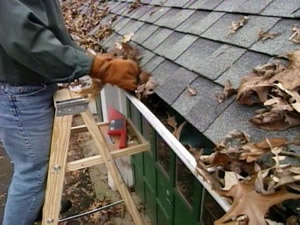What steps need to be taken to winterize a home?

The elements of winter such as snow, rainfall, and wind can have an adverse impact on the structure of a home, causing considerable damage or destruction in some extreme cases. Certain steps can go a long way towards protecting the home against destruction that may be caused by these factors.
Clear the Leaves Away from the Gutters
High winds have a habit of bringing debris including leaves, sticks into the gutters. This can stop the free flow of ice and this in turn can result in ice damming. When the draining of ice does not occur freely, this water can seep into the house resulting in water leaks and damage to the walls, ceiling, and structure of the house. Gutter guards can be helpful since these can prevent debris from flowing within the gutters, thereby maintaining the flow of storm water or just rain. A frequent inspection of gutters should be completed, certainly in the fall and winter months.
Maintain Insulation Requirements of the House
If a house is not properly insulated, then it can be susceptible to damage. The excessive escape of heat through the attic can result in the melting of snow or ice on the roof and it then may refreeze which can induce a buildup of ice. With excess weight on the roof, the house may experience large scale structural problems. Homeowners should ensure that the attic is warmer by five to ten degrees compared to outside air. Extra insulation should be added to crawl spaces as well as basements to prevent problems such as pipe freezing.
Remove Fallen and Dead Branches
Excessive wind, snowfall, and other elements can cause considerable damage to trees and branches. Falling branches can cause damage to cars, pets, people, neighbors' homes, and also result in widespread injuries. It is therefore important to trim the trees in the yard and all dead branches should be cut down and removed (preferably in the summer or fall).
Keep the Home Warm and Regularly Inspect the Pipes
To avoid the chances of any pipes from freezing it is important to maintain the temperature within the house to no less than 50 degrees. That is pretty cold; you should not even come close to that. Since the pipes are located within the walls, the temperature is actually colder where they are and so it is important to ensure that the temperature inside the house does not fall below 55 to 50 degrees. The pipes should be checked on a regular basis for problems such as cracks or leaks. If minor damages and leaks are corrected in time then costly repairs should not be required in the future.
The Maintenance of Heating Systems and Handrails
It is important to service the heating systems so as to ensure that they remain in solid and fine working condition. Fire as well as smoke alarms should also be checked on a regular basis. Snow as well as ice can make walking on damaged steps dangerous (or any steps for that matter). It is important to inspect snow covered steps or walkaways and repair all possible damages.
The Regular Inspection of the House and Plumbing Systems
The plumbing system of the house should be inspected on a regular basis. The homeowners should become aware of how the water supply can be turned off in the event of an emergency. Regular inspection of the home should also be conducted so as to identify structural damage. Such inspection can also allow homeowners to take steps towards protecting the house against water damage or flooding associated with snow. In the event the homeowners are planning to be away from the home for a long period of time, it is important to drain the pipes to prevent any freezing from occurring.
